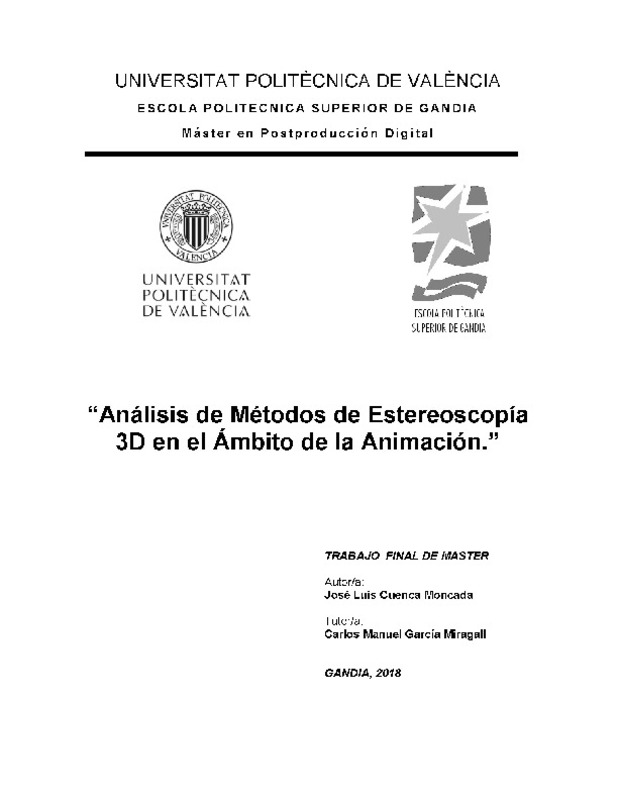|
Resumen:
|
En este proyecto se buscó realizar una investigación sobre los métodos y tipologías estereoscópicas 3D, analizándose específicamente los métodos de proyección y sus variaciones aplicadas al campo de la animación. Para su ...[+]
En este proyecto se buscó realizar una investigación sobre los métodos y tipologías estereoscópicas 3D, analizándose específicamente los métodos de proyección y sus variaciones aplicadas al campo de la animación. Para su realización se empleó una metodología teórica-practica la cual sirvió de ayuda para crear un marco teórico sobre los métodos estereoscópicos, de los cuales se los analizo, estudio y con ello se buscó contestar las preguntas que animaron la investigación, como: ¿influye en la animación al aplicársele una nueva dimensionalidad?, ¿qué factores nuevos intervendrán en su proceso de creación?, ¿qué se debe tener en cuenta ante los nuevos requerimientos de la animación estereoscópica?, en el proceso de creación de la animación estereoscópica ¿esta se debe basar en lo mismo principios de la animación digital?, ¿qué aspectos varían en cada método?, ¿cuáles son las características específicas de cada una?, ¿qué factores debemos priorizar (tiempo/recursos) en la conversión?, ¿qué método es más efectivo en la conversión?,
Con los resultados obtenidos de las pruebas realizadas en el proyecto se llegó a un mejor entendimiento en la aplicación de este tipo de tecnología. Mediante este estudio se ha obtenido mucha información clave sobre la animación estereoscópica que se basa en la animación tradicional pero desarrollada desde la estereoscopia.
[-]
The aim of this project was to carry out research on stereoscopic 3D methods and typologies, specifically analysing projection methods and their variations applied to the field of animation. A theoretical-practical methodology ...[+]
The aim of this project was to carry out research on stereoscopic 3D methods and typologies, specifically analysing projection methods and their variations applied to the field of animation. A theoretical-practical methodology was used to create a theoretical framework on stereoscopic methods, which were analyzed, studied and with it, we sought to answer the questions that animated the research, such as: does it influence animation when a new dimensionality is applied to it, what new factors will intervene in its creation process? What should be taken into account when faced with the new requirements of stereoscopic animation? In the process of creating stereoscopic animation, should it be based on the same principles as digital animation? What aspects vary in each method? What are the specific characteristics of each one? What factors should we prioritize (time/resources) in the conversion? Which method is more effective in the conversion?
With the results obtained from the tests carried out in the project, a better understanding was reached in the application of this type of technology. Through this study a lot of key information has been obtained about stereoscopic animation which is based on traditional animation but developed from stereoscopy.
[-]
|







